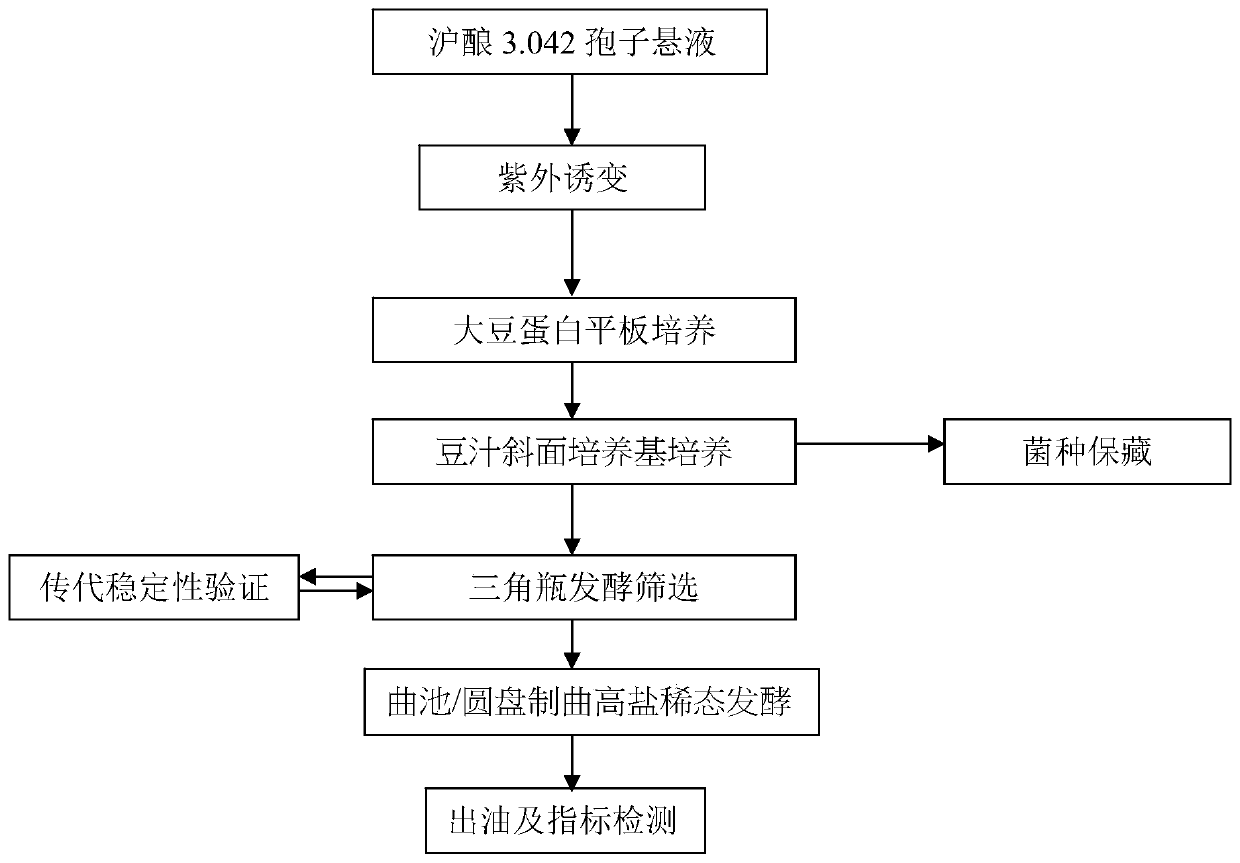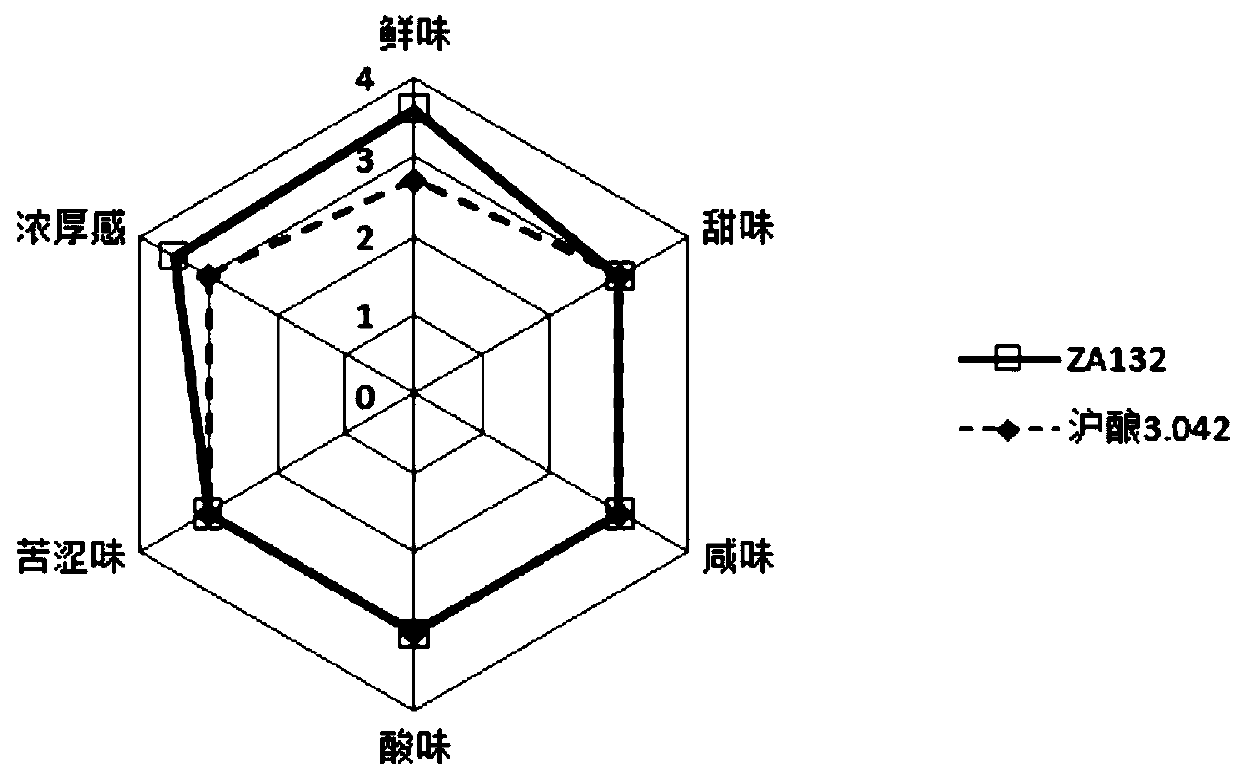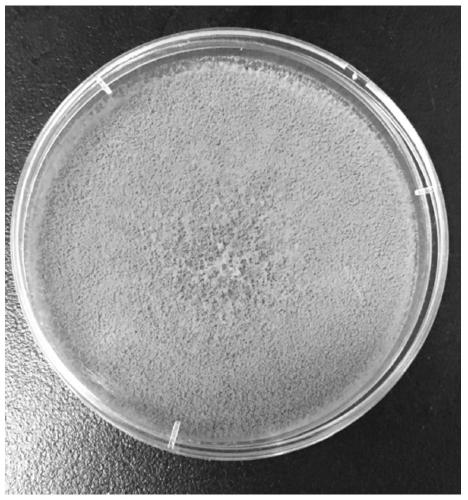A strain of Aspergillus oryzae za132 and its application
A technology of Aspergillus oryzae and uses, applied in the field of microorganisms, can solve the problems of complicated operation, large demand for yeast cells, and high cost input, and achieves the effects of broad application prospects, large production application value, and good quality.
- Summary
- Abstract
- Description
- Claims
- Application Information
AI Technical Summary
Problems solved by technology
Method used
Image
Examples
Embodiment 1
[0038] The mutagenesis of embodiment 1 Aspergillus oryzae strain
[0039] The spores of the mature strain Huyao 3.042 were prepared into a spore suspension, and the spore suspension was subjected to ultraviolet mutagenesis. The spore suspension after ultraviolet mutagenesis was diluted to 10 with sterile physiological saline according to the 10-fold gradient dilution method. -1 、10 -2 、10 -3 、10 -4 、10 -5 、10 -6 Concentration, made spore dilution.
[0040] Take 0.2 mL of spore dilution and spread it on the soybean protein plate medium, and incubate at 30°C in the dark for 4 days. During the cultivation process, observe and record the growth rate of bacterial colonies and the condition of spore attachment. The strains with fast growth and good spore colonization were selected, transplanted into the bean juice slant medium, cultivated in a 30°C incubator until mature, and then stored in a 4°C refrigerator for later use.
Embodiment 2
[0041] Embodiment 2 Aspergillus oryzae strain Erlenmeyer flask culture and fermentation
[0042] Mix the defatted soybeans and water according to a certain ratio, sterilize at 121°C for 20 minutes, mix the wheat into the defatted soybeans, divide them into Erlenmeyer flasks to make a solid Erlenmeyer flask culture medium. The Aspergillus oryzae slant strain in Example 1 was transplanted into the culture medium of the Erlenmeyer flask, and cultured at 32° C. for 96 hours until the koji material matured to obtain the koji material of the Erlenmeyer flask.
[0043] Add 2 times of brine to the koji material of the triangular flask for high-salt dilute fermentation, and decompose and ferment in a 45°C incubator for 30 days. Shake well after fermentation and filter, and the filtrate is determined for guanylic acid content by HPLC. Three strains with high content of guanylic acid were obtained, named ZA132, AT121, UY155. The test results of the filtrate are shown in Table 1.
[00...
Embodiment 3
[0048] Application of embodiment 3 Aspergillus oryzae ZA132 strain in soy sauce production
[0049] The seed koji produced by using the Aspergillus oryzae ZA132 obtained in Example 2 is added to the koji material prepared in a certain proportion from soybeans and wheat, and the koji is made by using a disc koji making process. The koji making process is a conventional method No special treatment is needed for koji making, that is, on the basis of the koji production process of Huniang 3.042, the production is completely normal, and the disc-shaped koji of Aspergillus oryzae ZA132 strain is obtained.
[0050] Add 2 times of brine to the above-mentioned disc koji for high-salt dilute fermentation. The fermentation temperature and fermentation cycle management are carried out according to conventional methods, and a total of 3 batches of high-salt dilute fermentation are carried out. After the fermentation, the pressed soy sauce was tested for the content of amino nitrogen, gluta...
PUM
 Login to View More
Login to View More Abstract
Description
Claims
Application Information
 Login to View More
Login to View More - R&D
- Intellectual Property
- Life Sciences
- Materials
- Tech Scout
- Unparalleled Data Quality
- Higher Quality Content
- 60% Fewer Hallucinations
Browse by: Latest US Patents, China's latest patents, Technical Efficacy Thesaurus, Application Domain, Technology Topic, Popular Technical Reports.
© 2025 PatSnap. All rights reserved.Legal|Privacy policy|Modern Slavery Act Transparency Statement|Sitemap|About US| Contact US: help@patsnap.com



